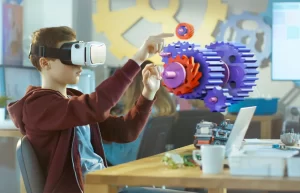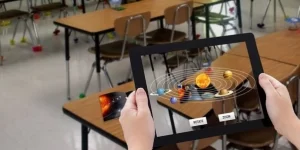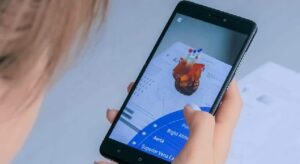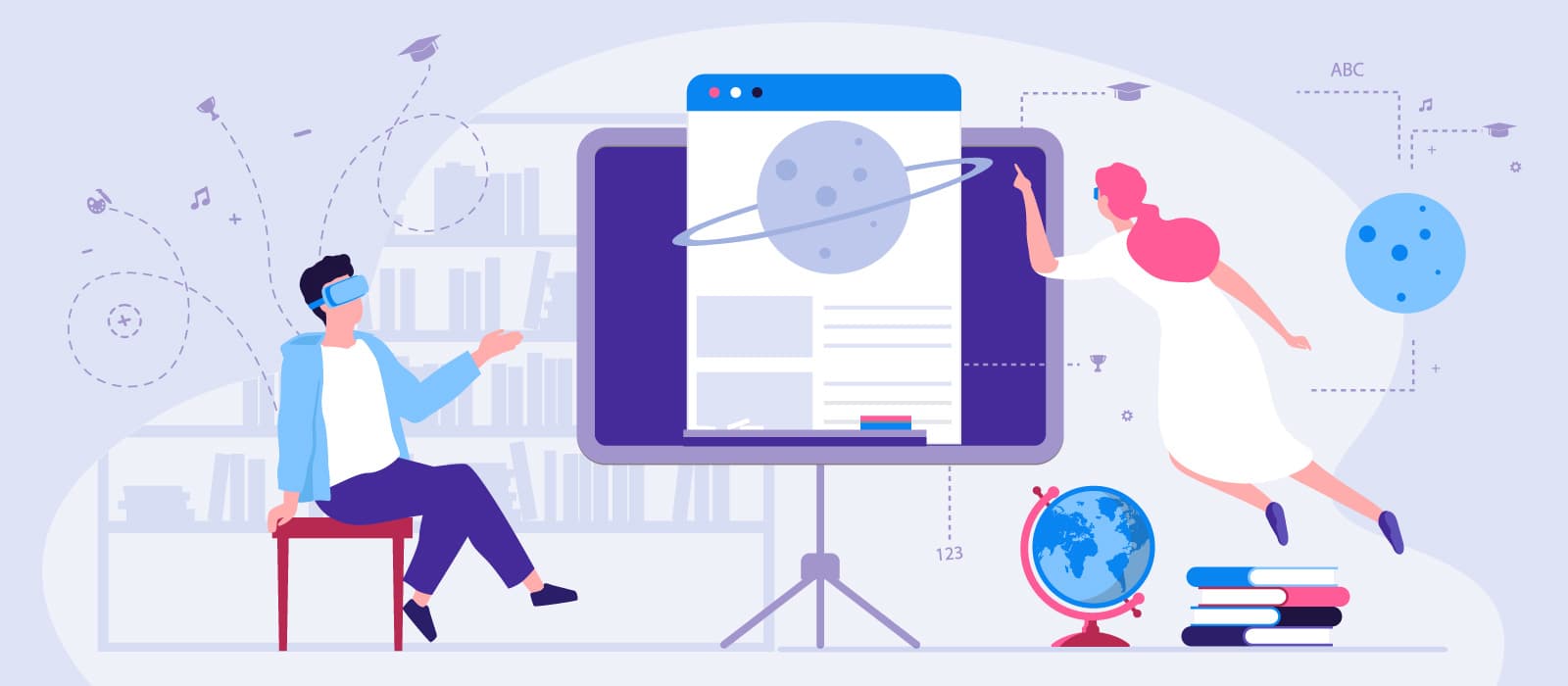How AR/VR is Revolutionizing Education?
1. Immersive Learning Experiences
Traditional teaching methods often rely on textbooks and lectures, which can sometimes fail to capture students’ interest. AR/VR, however, brings lessons to life. Imagine a history class where students can virtually walk through ancient civilizations or a biology lesson where they can explore the human body in 3D. These technologies allow students to engage with subjects in a way that is both interactive and memorable.
2. Enhancing Practical Skills
Fields like medicine, engineering, and aviation require hands-on training, which can be expensive or risky in real-world scenarios. AR/VR simulations provide students with a safe environment to practice surgical procedures, build complex structures, or even pilot aircraft. This practical approach ensures that students gain valuable experience before entering the workforce.

3. Personalized Learning Journeys
Every student learns at a different pace, and AR/VR can cater to individual needs. With adaptive learning programs, students can revisit concepts they find challenging and progress at their own speed. This personalized approach helps improve comprehension and retention, leading to better academic outcomes.
AR/VR in Higher Education
Universities worldwide are investing in AR/VR labs and digital classrooms to provide cutting-edge education. The best private university in Gujarat is at the forefront of this transformation, integrating AR/VR into various disciplines. From architecture students designing 3D models to medical students practicing surgeries in a virtual environment, the possibilities are endless.
Moreover, AR/VR plays a crucial role in remote learning. With virtual classrooms, students can participate in interactive lessons from anywhere in the world. This is particularly beneficial for distance education programs, making learning more accessible and inclusive.

The Future of AR/VR in Education
As technology advances, the role of AR/VR in education will continue to expand. We can expect:
1. AI-powered AR/VR experiences that adapt to students’ learning styles.
2. Increased use of VR field trips, allowing students to explore museums, historical sites, and even outer space.
3. Collaboration in virtual spaces, where students from different parts of the world can work together in real-time.
Educational institutions, including the best private university in Gujarat, are committed to staying ahead of the curve by integrating these innovations into their curricula. The goal is to create a dynamic, engaging, and future-ready learning environment.

Conclusion
The impact of AR/VR on education is undeniable. These technologies are making learning more immersive, practical, and personalized, ultimately enhancing student engagement and performance. As more institutions adopt AR/VR, we can expect a future where education is not just about memorization but about experiencing and understanding concepts in depth.
With universities leading the charge in this transformation, students today are better equipped for the demands of the modern world. The future of education is here, and AR/VR is at its core!
